Fly fishing for carp on the Great Lakes, particularly Lake Michigan, can be one of the most enjoyable experiences a freshwater fly angler can have. We’ve all seen the photos and read the articles, but what is not mentioned in these articles is that fly fishing for carp on the Great Lakes is not a sure thing and can be very challenging on many different levels. You’ve got to pay your dues and put everything together to really take advantage of this fishery. This is a guide to fly fishing lake Michigan that you can apply to all of the Great Lakes when fly fishing for carp.
A quick thought about carp fly fishing on Lake Michigan. Very few people have fished all parts of the Great Lakes for carp for long enough periods of time to draw conclusions that can be universally applied from area to area. Wisconsin is not Beaver Island. Grand Traverse Bay is not Wilderness Park. Not all parts of the Great Lakes are the same. Fishing pressure, boating pressure, people, water depth, vegetation, bottom content, and many other factors make every specific part of the Great Lakes unique. I have fished most parts of Lake Michigan on both the Wisconsin and Michigan sides.
I’d like to thank John Bartlett (carponthfly.com) and Luis da Wrench for their input and suggestions on the original article, now updated. An additional note is that there are many good guides for Great Lakes carp. Kevin Morlock and Steve Martinez of Indigo Guide Service/Third Coast Fly are the guides for Beaver Island. Ethan Winchester and his guides up at Boyne Outfitters can give you advice on Wilderness Park area, and Brian Pitzer from the Northern Angler does carp in Traverse City. Finally, if you get one book on the Great Lakes, including carp, get Jerry Darkes’s book, Fly Fishing the Inland Oceans.
LOCATING GREAT LAKES CARP ON LAKE MICHIGAN
Everyone hears about the carp flats of Lake Michigan that attract carp normally from May to August. They do indeed exist, and there are miles upon miles of them. However, the water depth of the Great Lakes fluctuates. If the water comes up a foot or two in one year, then you might not have a lot of flats that you can access by wading, or you might have to really hunt for flats that you can wade. This, then, becomes a boat game, or you have to really stay in close near the shore. High water also keeps you away from the distinct drop-off that provides both the smallmouth and the carp an area of security. The takeaway is that you need to find water that is shallow enough for you to wade but that is near water deep enough to provide fish the deep water they need to feel secure. This doesn’t have to be a flat. It can be a point or small bay. The word “flats” is often used loosely to refer to shallow water that can be waded for a substantial distance. Just know that you’re looking for wadable water. That means wadable flats/points/bays near deep water.
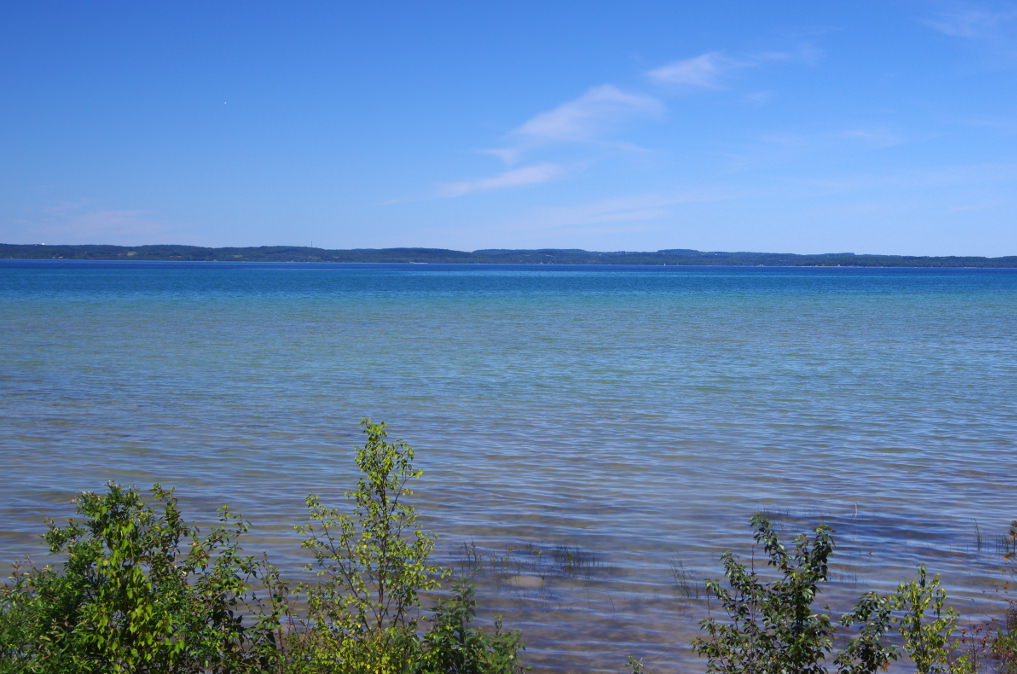
In 2020, Lake Michigan was essentially as high as it has ever been. Shallow water was difficult to come by, so anyone who is new to the Great Lakes will not have the benefit of knowing where the shallow water is. The shallow water is often where only land was a few years ago. Use Google Maps to try and figure out shallow water if you need to find new water.
Next, water temperature is hugely important for finding fish. Carp love warm water, as do Great Lakes smallmouth, relatively speaking. Shallow water warms faster, so fish may be in this shallow water if everything else is ten degrees colder, particularly if it is near deep water. As John Bartlett points out in our podcast together, the wind pushes the warmer water into different coves and bays. The water is noticeably warmer as you wade. You will hit small pockets of colder water that is being mixed with the warmer water. Follow the wind and warmer water because the carp will, too. Pay close attention to this because carp will be found in specific sections of bays and coves. Move until you find the warmest water, and that may be just around a point or just a few hundred yards away. Once you’ve found warm water, keep moving until you find the fish.
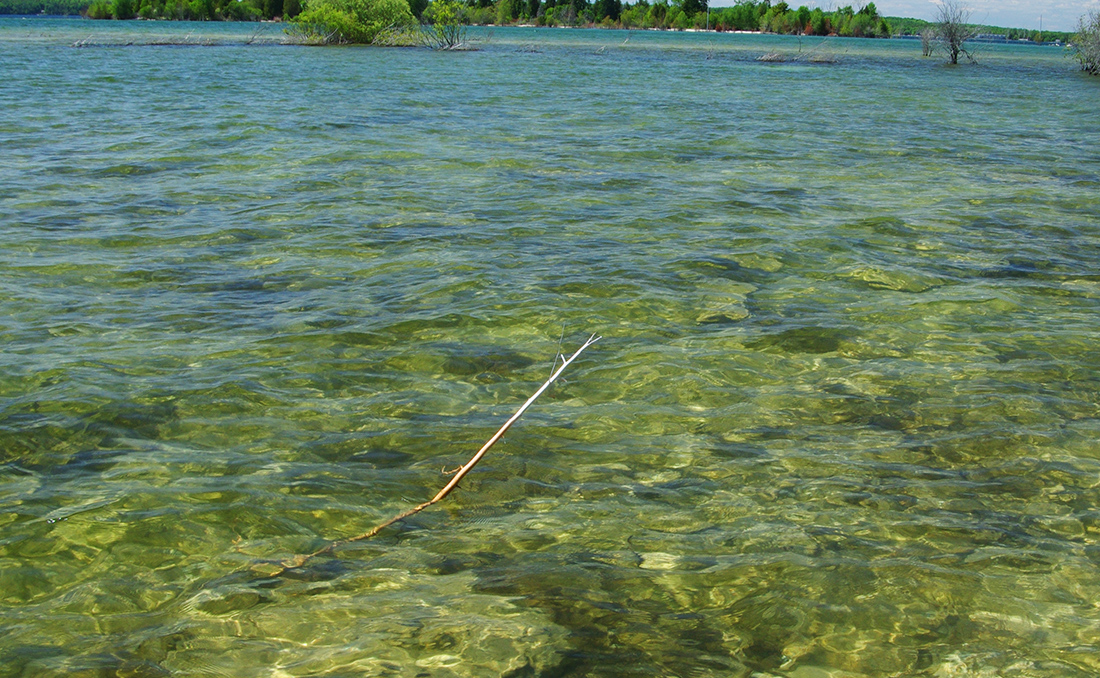
Water temperature is important, but so is the weather. I always try to fish Lake Michigan when there is going to be sunny and warm weather. Ideally, the wind isn’t blowing you over either. I still have very good success when it’s cloudy as long as the water temperature is warm and fish are there and moving slowly. You just can’t see the fish anywhere near as far out. For this reason, I try to find areas that are attracting fish. In this way, the fish are coming to me. In lower light situations, as in cloudy days and at dusk, I find that carp become much bolder, and allow me to get much closer to them on Lake Michigan. The bright sunlight increases our ability to see fish tremendously, but I am normally happy if I have warm temps and happy fish. Ideally, the sun is out and you can see them coming from way off. This is fishing though, and I take what I can get. Having said that, bright sun is crucial for locating fish initially.
Follow the fish. In the Great Lakes, the fish move like saltwater fish at times. They often have somewhere to be, and carp move across the large expanses of water and flats to get to more desirable spots. You’ll find fish that are rapidly cruising all the time. They are difficult to get to eat in my experience, but they are going somewhere, so pay attention to the direction, and if you can, simply follow the fish to where they’re going. They will often bring you to a location where the fish are moving much more slowly. These fish are better targets.
As an example, I was casting to a lot of medium-sized carp one day, but they wanted nothing to do with my flies. I followed them to where they were going and found that they were moving into an area that had become covered in water because of the high water levels. These fish were mudding on the bottom very slowly like feeding carp everywhere. These fish were much more receptive to flies. Find where the fish are going. It makes all of the difference in the world.
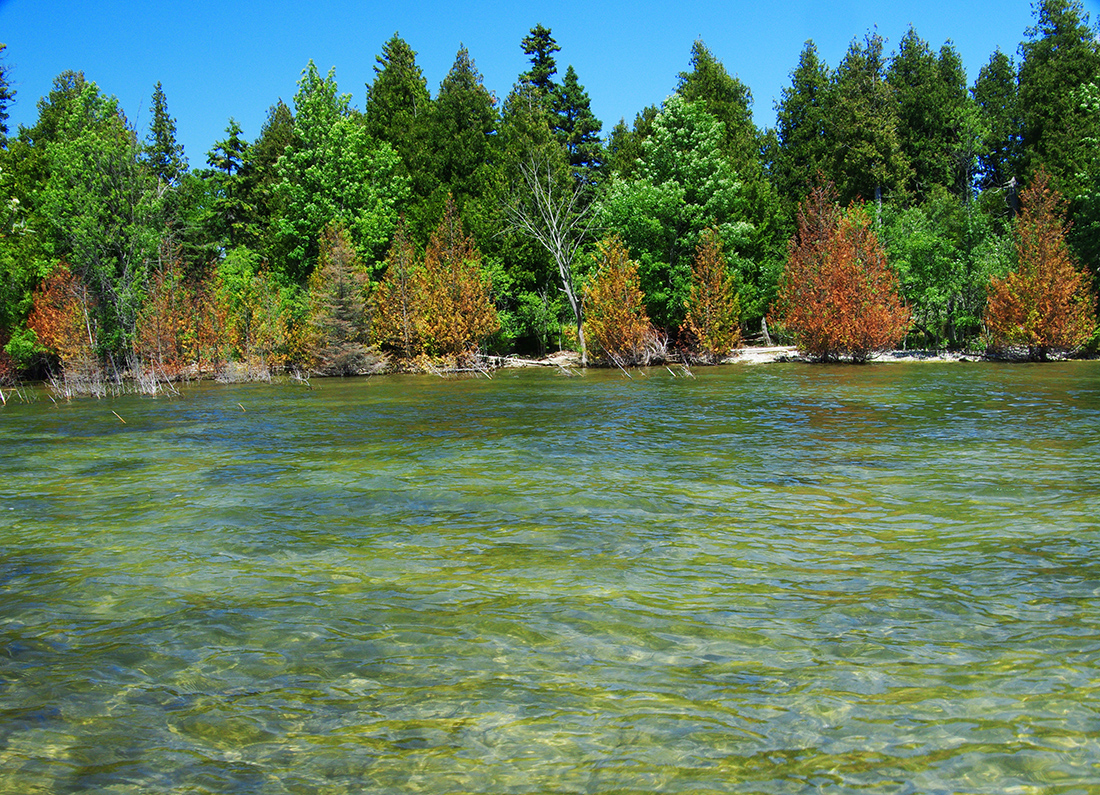
I also believe that areas that have some form of protection from the wind are desirable to carp. They don’t have to fight against any current and can more easily loaf about. In my experience, they will often be moving a bit more slowly, as well, when they have some sort of wind protection. If you can find transition points of slow water by deep water, this can be filled with carp. Add to this pieces of cover and/or structure, and you have something that differentiates itself from the other miles of flats. Vegetation or rocks are a prime example. This also leads to another point: pay attention to bottom content. If you come to a lot of sand and a really flat area without any personality, it is normally not as productive for larger fish. On Lake Michigan, rocky bottoms with lots of intermittent boulders and rocks of various sizes provide excellent hiding areas for crayfish and gobies. The carp that will be found around here are normally active and looking for food.
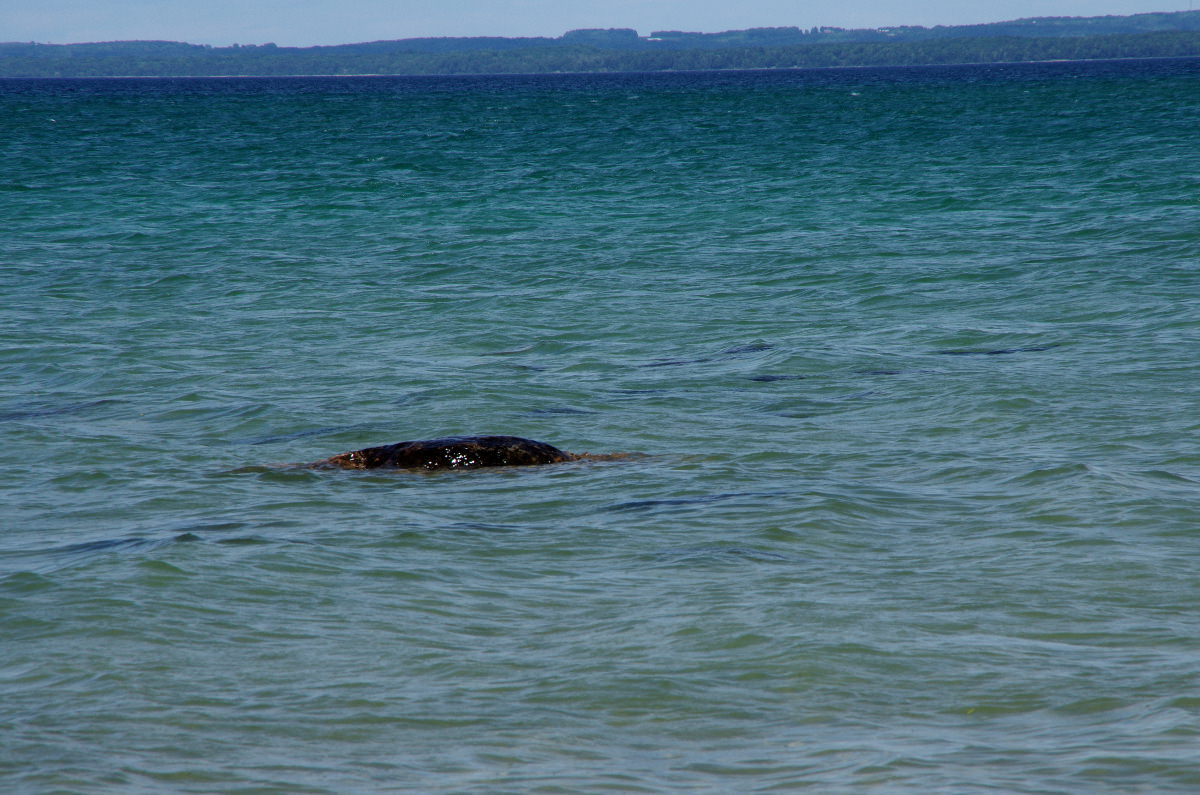
The dark spots of carp gather around points and structure.
So, remember your prime objective is to find fish, and particularly fish that are moving slowly or with a purpose, i.e., to eat. Keep this in mind and keep moving until you find the fish, and hopefully the right fish, but keep a driven attitude and keep experimenting. I was reminded of this one time when I found some fish and was doing pretty well. I broke my rod tip and ran back to get my replacement rod. When I returned, I found two carp anglers in the exact same spot I was in ten minutes before. Because I have only seen a few carp anglers on the flats, I was a bit livid at my luck but tried to find some more fish. So, I hiked to some water that seemed to have all of the factors listed above. Fish were everywhere and were moving methodically, so they were prime targets.
Finally, from a general area perspective, I would concentrate on islands, peninsulas, bays, and flooded areas. These types of locations really produce the best habitat for fly anglers.
For some great information on locating Great Lakes carp, the effects of water height, and the dedication and mindset you need to consistently catch Great Lakes carp on the fly, check out this seven-year trip report. The first part of the post has a lot of very valuable information, particularly when you really analyze it.
PRESENTATIONS FOR GREAT LAKES CARP
If there is one factor that I would describe as more or less universal, it is a carp’s dislike of plopping sounds onto the water. They absolutely hate it. They have a Weberian apparatus, which makes them particularly sensitive to vibration. Many species of fish are attracted to the disturbance and sound of a fly falling into the water, but normally not carp. I try to avoid plopping sounds at all costs, and the pitch of the plopping sound may be key. Any high-pitched plop drives carp away in my experience. For this reason, cast farther away when using larger barbell eyes, and try to use them for mainly deeper water and in windy conditions.
So why use heavier, loudly-plopping eyes to begin with. The answer is depth and an ability to get the fly down fast. We need our flies to get down to the carp’s level, whether at the mid-depths or on the bottom. Lightly-weighted flies just don’t do this well enough at times. There are two main factors to consider when adjusting weight: the drop and the fish’s eating level. When your fly drops, carp in most fisheries are often attracted to this. However, I have never had a single Great Lakes carp eat my fly on the drop—that’s been my own experience with hundreds of carp. I’ve had many more spook from the falling fly or when I’ve pulled the fly through the water too quickly to get it into their feeding lane. John Bartlett, on the other hand, has had good success at times with the drop when fish are moving more slowly, are nearly stationary, or are resting fish. Try lightly weighted flies, and try to get a triggered strike out of these fish.
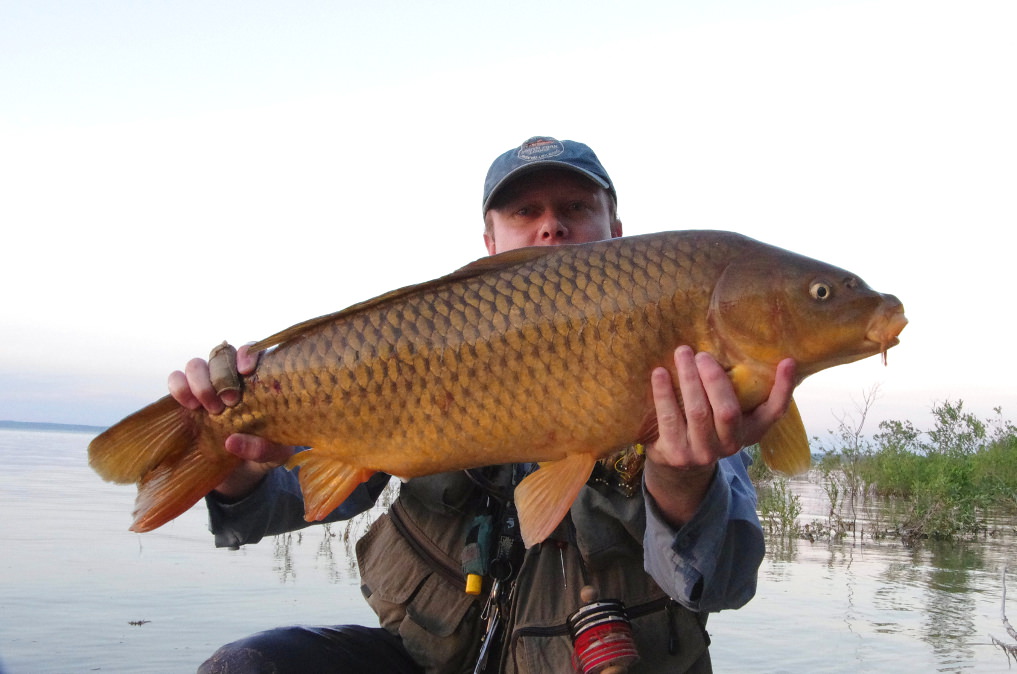
The fish’s eating level is critical for Great Lakes carp. My experience is that I want the fly to be on the bottom before the fish gets near the fly. Then, I can move it into position on the bottom, or I can twitch or jump the fly from the bottom. This normally requires heavily weighted flies, but then, you have the splash or plopping factor. For this reason, I often like using four large bead chain eyes as with the PC Goby, since it still gets the fly down but distributes the splash. Play around with how you tie and organize your flies though, and you can get some ideas in this article on carp flies.
Three more tips help me catch a lot more fish. Remember the different types of carp and their moods. John Bartlett really covers this well in this podcast on trophy carp. Examine the carp’s speed, relative mouth to bottom distance, and general swimming motion. Once you have found the right fish, make sure that the carp does not hit the tippet when it goes to eat the fly. Let’s say that the fish is coming down onto the fly and you’re holding the line straight up and down at close distances. The fish will feel the line first. They don’t like this. You want your leader to be lying flat if possible. Carp will ignore the line at times, but I’ve seen fish turn away after touching the tippet with their lips on their way down to eat a fly.
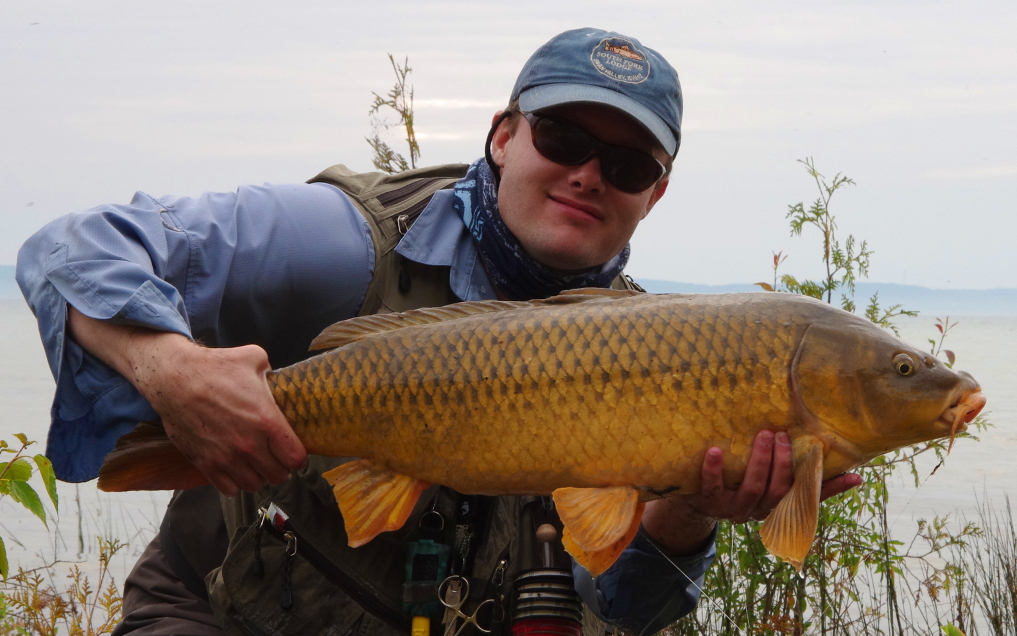
Finally, use some form of stealth. The ideas found in this article for steelhead and trout are very applicable here. I regularly have carp bolt from me at 80 to 90 feet when I’m standing in the middle of the flat casting. That’s not always the case, and I think a lot of it depends on pressure and how relaxed you make the fish. I’ve had many fish pass five feet from me when I use more stealth or the carp are very lightly pressured. Sharp movements, like when you cast, send carp into the abyss or put them in a negative feeding mood. I use cover when I can. I keep a low profile, and I use boulders in the water to hide my feet. I’ll actually stand on big rocks when I’m spotting fish and then gently drop down to lower my profile as I put the rock between me and the fish. If you have some lazy spawners, this won’t apply as much, but it still applies in pretty much every situation.
Keep in mind that the standard presentation for these fish on the Great Lakes is the drag and drop. If you can, cast past the fish, but if you can’t, try to cast to an area near the fish while anticipating the fish’s path. Experiment with the drop, and if it’s spooking fish, then get the fly to the fish’s level immediately. Get the fly near the fish’s head, but make the carp move to the fly by putting the fly a little to one side or in front of it a bit. Then, if the fish follows the fly, just stop it, and watch the fish. If the the fish does not go for the fly, you might try bouncing the fly to get the fish’s attention. At times, I will continue to move the fly slowly when I can’t see the fish very well. Then, I will feel for resistance and strip strike.
On a slightly different note, you will notice two different colors of carp on the Great Lakes at times. It’s very pronounced as the fish are swimming. One is a gold, and the other is a dark, almost black color. Cast to the gold-colored carp if you can since they are often better eaters and fighters.
DETECTING STRIKES
Strike detection with carp is one of the most difficult aspects to master (I haven’t). Many times these fish will put a sipping rainbow trout to shame. They move like a sloth when they come down to gently suck up your fly. Often there is very little movement, I’m convinced we would catch many more fish if we had perfect strike detection. This is why John Bartlett says, “Make ‘em move a little to the fly.” If the carp is moving pretty aggressively, the take will normally be more pronounced. In most cases, I watch for the subtle dip and pay attention to the fish’s movements, and when in doubt, it’s good advice to set the hook. A strip strike is the safest way to avoid snagging the fish if it didn’t take. You might eventually snag a fish or two, but you will also catch a lot more fish. Incidentally, I strip set unless the fish is very close. Then, I trout set since I want the rod to absorb some of the force on the hookset at close distances. Also, sharp and sticky hooks are hugely important, and I know that in many cases, I have become aware that a carp has taken my fly only after the hook got caught on the fish’s lip because it was so sharp. Strong, sticky hooks are hugely important for carp in all venues.
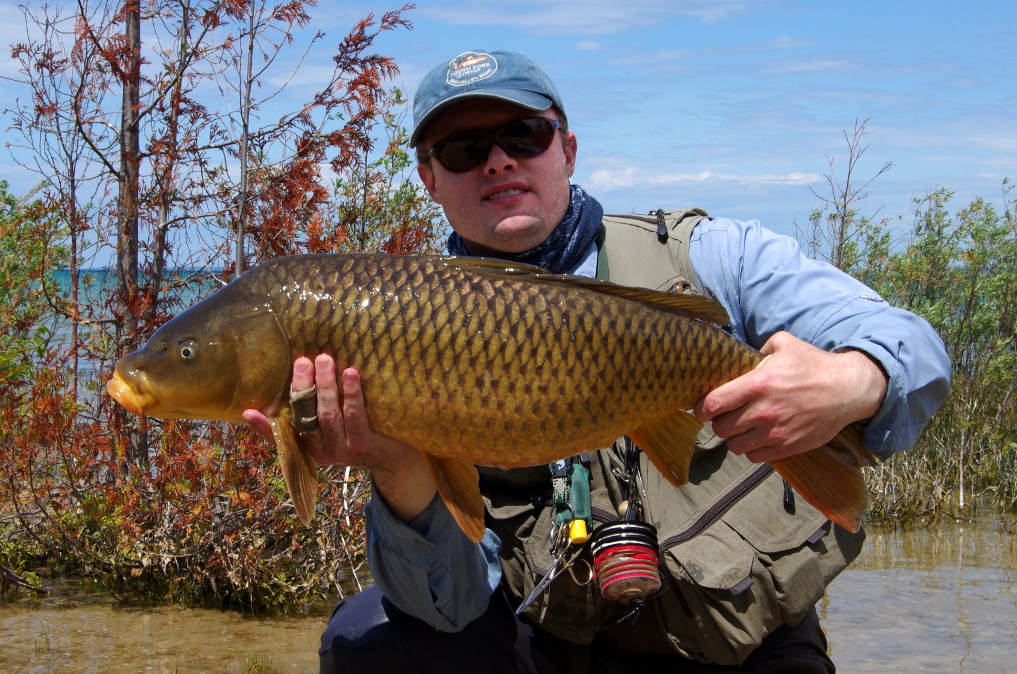
GREAT LAKES CARP FLIES
I personally always like to think of flies for all species of fish in terms of features and function, and this is really important for carp. Because of the finicky and fickle nature of carp, effective fly features outside of different weights and an upright hook have been somewhat difficult to nail down. For example, how should we approach fly color, what’s the effect of flash on carp, and how about fly size? The available prey to a carp is obviously a great start when selecting a fly, but there are so many times when a carp has dozens of different sized prey items available or when we just don’t know what is available, such as when we fish a new body of water. We can normally assume the “standard” prey items. Adapt your techniques to the prey items you know are present in your particular fishery.
To be clear, gobies are the primary food source for carp on Lake Michigan. On different parts of Lake Michigan, you can see thousands of them of various sizes jumping off of the bottom as you walk. Crayfish and other insects can be an important food source as well. Most anglers I know use goby and crayfish imitations almost exclusively.
I often hear people talk about Great Lakes carp as if they are unreal predators, chasing down flies like a smallmouth bass. In my experience, this is the exception, although these carp do eat things that move normally. They also do not often eat “big” flies. I’m coming to great lakes carp as someone who regularly fishes 6-inch flies. My local creek carp regularly take my 2.5-inch PC Goby pattern. Great Lakes carp are not that different from the carp I normally fish to. In most years, you probably shouldn’t anticipate throwing three and four-inch flies to charging carp all day, while catching fish after fish. If you do that, then more power to you, but that has not been my experience on an average day.
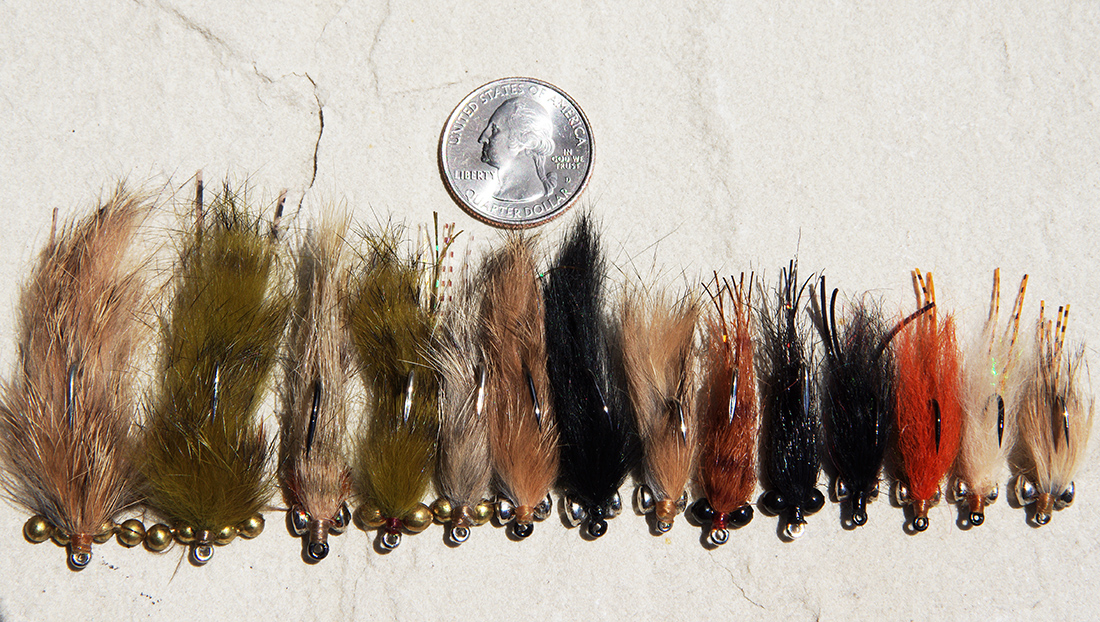
I normally don’t fish flies over 3 inches for Lake Michigan carp, but in some years when the gobies are larger on average or you fish particularly deeper water (often from a boat), you might find success with larger flies. In fact, the fish might prefer these larger patterns. A good rule of thumb for me is to start out with the bulkier 1.5-inch to 2.5-inch goby style flies and then to watch the reactions of the fish. Are they ignoring the fly, are they interested but not committing, are the fish cruising, or are they moving slowly? Incidentally, I normally cast larger and more visible flies to the fast cruisers in deeper water. Finally, are you spooking fish?
If you’re getting good presentations but the fish are ignoring or not committing, experiment with fly placement relative to the carp’s head, but then, try different flies. The Great Lakes normally have larger prey items like crayfish and gobies, but there are also hex nymphs, etc., and if you start moving into marshy areas, the food base increases dramatically in diversity. Keep in mind the specific habitat and the prey items that are best suited to this habitat.
A case in point is when my biggest Great Lakes carp came from a weedy area where fish wanted nothing to do with my larger goby and leech style patterns. I switched to a Hybrid and caught a 24 pounder on the first cast. It commenced to spook every carp within a hundred yards as it flew into the reeds. This is not a “traditional” Great Lakes fly, but adjust your fly and presentation to the conditions.
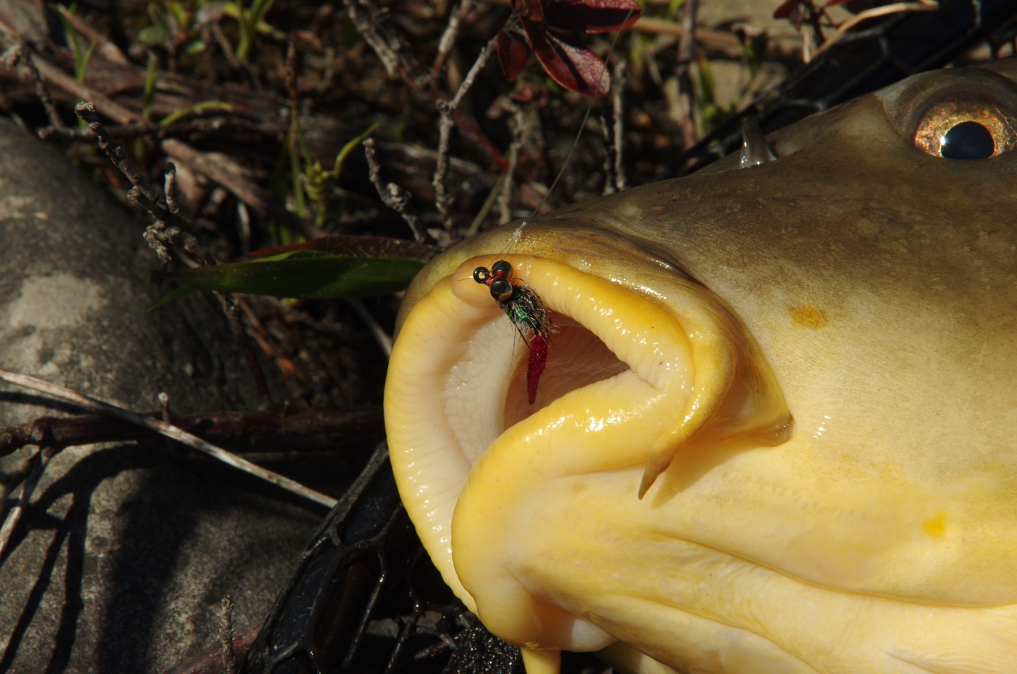
The size of your fly can be extremely important. I’ll regularly fish 1 to 1.5-inch flies when the carp aren’t interested in the larger 1.5-inch to 2.5-inch flies. In all carp fly fishing situations, downsizing may be critical. In fact, I’ve had situations were seemingly disinterested fish suddenly wanted to eat after I downsized my fly pattern. If you’re getting good presentations, but the fish aren’t interested, downsize and use a color you can see.
Color can make a big difference, and I think it has to do with visibility more than anything at times. Black has been very good on cloudy days or when I need to see the fly better, like when you’re using smaller flies. This is similar to orange/redish colors as well, and I’ve used my standard Jackalope Carp Fly in orange and black. Natural tans, browns, and olives are really my go-to fly colors most of the time though.
Flash may also be an important trigger for carp. I tie my version of the incredibly effective Hybrid with sparkle chenille, like many do. I’m not sure if this has any effect at all, but the fish definitely do not mind some flash and love this fly. I’ve also seen fish that were extremely attracted to very flashy flies. I’m still in the research phase of flash on the Great Lakes, so see what happens with a few flashy flies on the flats. I do know fly anglers who find that flash has a negative effect on Great Lakes carp.
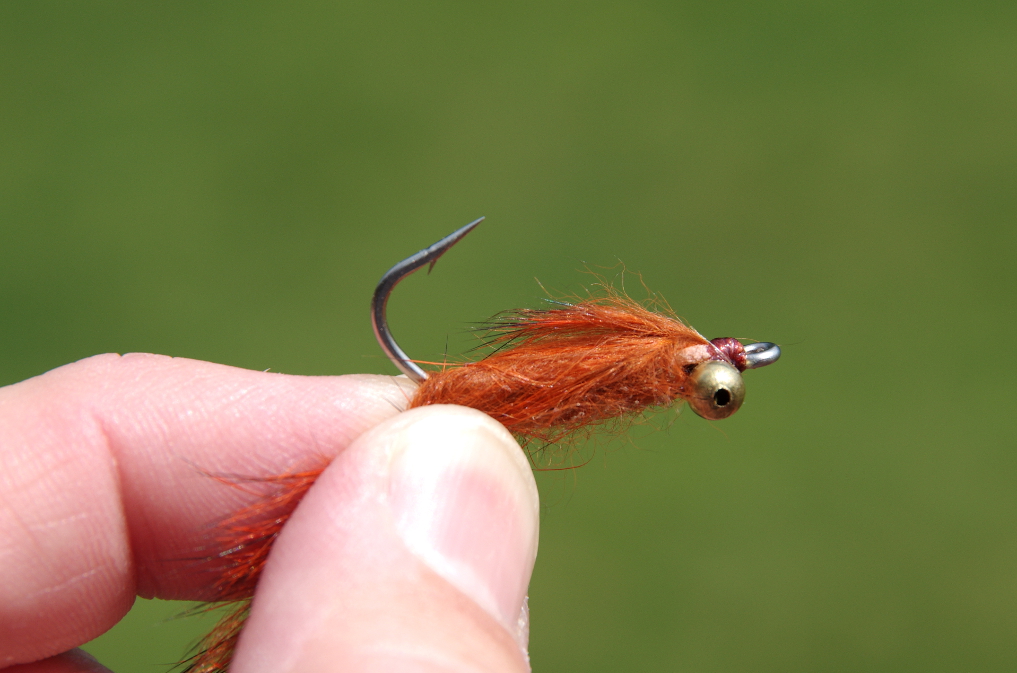
PLAYING AND HANDLING FISH
Advice on playing fish is often a neglected aspect of fly fishing for carp since we’re all supposed to know how to play a fish. This fact makes sense to a certain extent, but a few tips have helped me to land an extremely high percentage of the fish I’ve hooked on the Lake Michigan.
First and foremost, your sticky hooks get the hook into the fish. Then, your hook has to hold up to the steady but powerful run of the fish. I use the Owner Mosquito in 1/0 and 1 for the biggest patterns I use. Gamakatsu C14S hooks size 4 to 10 are a great all-round hook for carp. Traditional bonefish hooks, particularly the Daiichi X452 can be very good as well, and I have caught a lot of fish on Tiemco 811Ss, but they will bend in smaller sizes (4 and smaller). Finally, Gamakatsu and Owner Octopus hooks (1 to 6) are extremely good for Lake Michigan carp. They have a very open gap, are super strong and sharp, and have a small shank.
For leaders and tippet, I use 14lb to 18lb (.012) fluorocarbon tippet, often on my own tied leaders, but both Scientific Anglers and RIO have saltwater nylon and fluorocarbon leaders. Leaders can be 11 to 12 foot for deeper presentations all the way to 6 feet for close, shallow presentations. It’s good to start with around 9 feet for all-alround presentations. I start with 18lb. tippet and go down depending on the fish’s response, depth, and my fly size. Then, I’ll come down in diameter if the fly needs to sink faster, the fly needs to land softer, the fly is smaller, or the water is extremely calm. In general, pound test is meaningless for presentation; it’s all about diameter and line qualities. However, breaking strength is important when fighting these fish, and I go as big as I can normally.
As far as setups, I fish a nine or a ten weight (Sage Xi3 9 wt. and Sage Method 10 wt.) and never feel that it is too much rod for fighting the fish, delivering weighted flies, or casting into the wind. I use the nine on calm days when possible and match these with Hatch Finatics and their incredible, large arbor for when a fish runs back at you or when you just want to pick up line fast. When it comes to durability, I also set my rods and reels in the water a lot, so use a reel that can handle this if you’re like me. There are plenty of good fly lines on the market, and I use primarily RIO and SA lines. These lines are standard floating lines meant for saltwater or freshwater situations. This is the gear I use, but use quality gear on these guys for sure, and prepare for the wind.
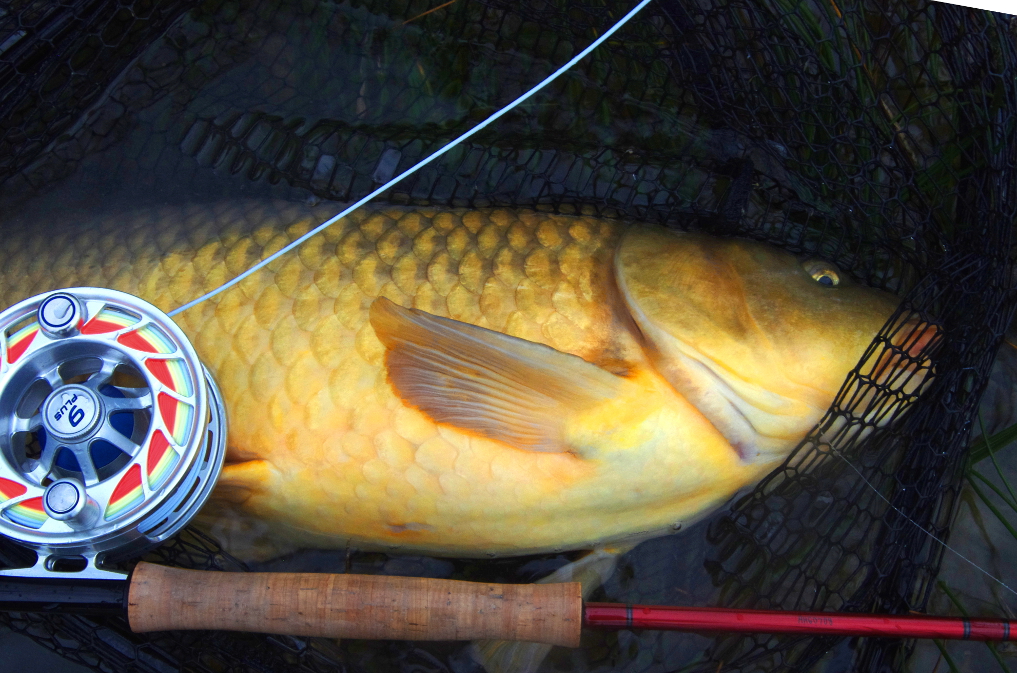
Finally, holding these fish out of the water is way harder than you would think, at least in my experience. Think of holding a 20 pound bowling ball covered in olive oil. Dropping any fish on the ground can do damage because their bodies are used to being in water permanently.
One thing that I have only very recently tried is to use a small mesh bag to grip the fish ten times easier. I don’t like the way that larger mesh bags look in my photos, so I’ve just used a generic soft mesh bag that held one of my kids’ toys. It fits just barely over my outstretched hand, and works beautifully. It’s small enough that it is not too distracting in photos, but it will allow you to hold a carp much more securely. I’m going to use it on every fish I need to hold for a photo from here on out.
Above all, don’t forget your net. A net makes life easier on everyone involved, including the fish. You can net a fish much earlier in the fight and allow the fish to not have to fight until it’s absurdly tired. You can also manage the fish for photos and removal of the fly. Always bring your big net.
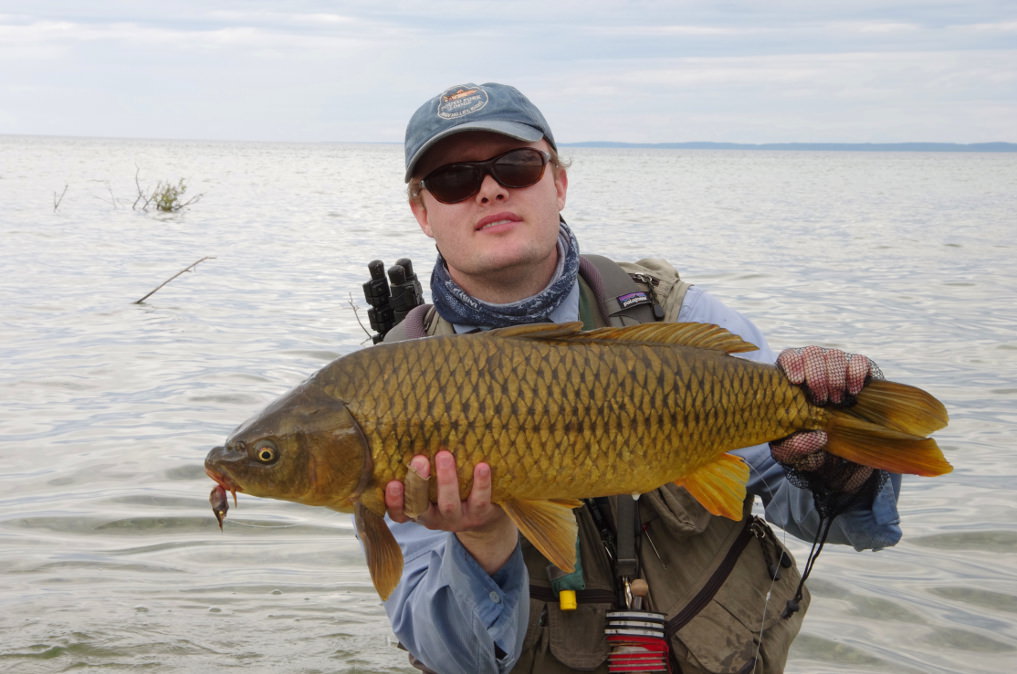
Many of these details and tips work on all carp fly fishing situations, but they have been particularly useful for me when fly fishing for Lake Michigan carp. This is not the Gospel, so experiment to find out what works best for you because water levels will totally change the water you fished only a few years previously.
The Great Lakes are some of the largest freshwater lakes in the world, and they have hundreds of miles of shoreline and sometimes surprising diversity. The more areas we discover, the more we can keep the experience one of solitude for ourselves and other anglers, which is a huge part of the overall Great Lakes carp experience. Hopefully, we can continue to expand this fishing even more on Lake Erie and Lake Huron, which have some amazing opportunities as well. Great Lakes carp are an amazing and challenging gamefish, and hopefully with this info, you can have more joy than frustration. To improve this article, feel free to reply below. We’d love to hear your experience.

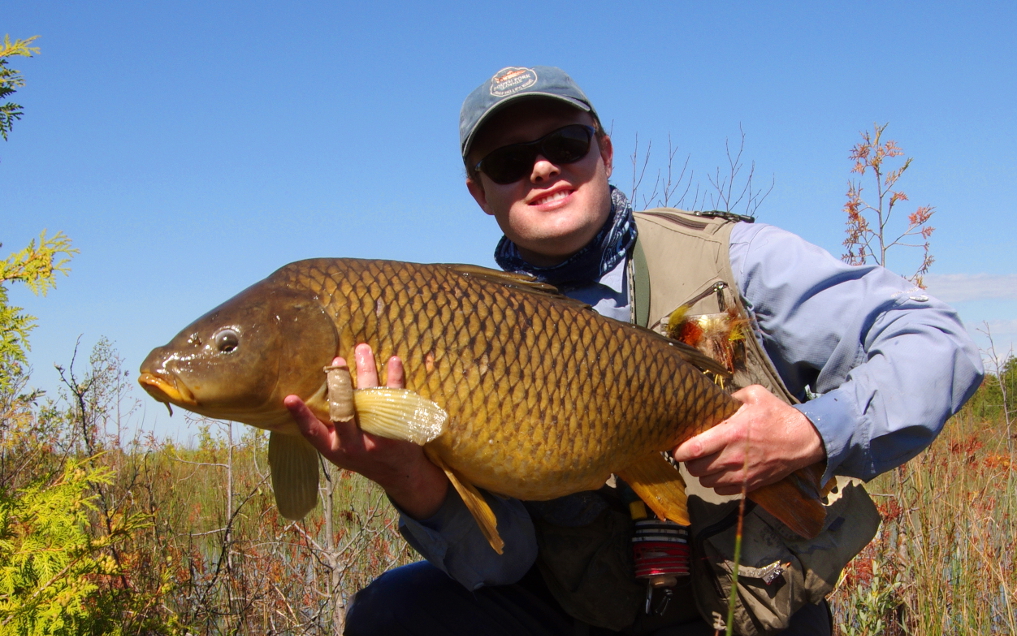
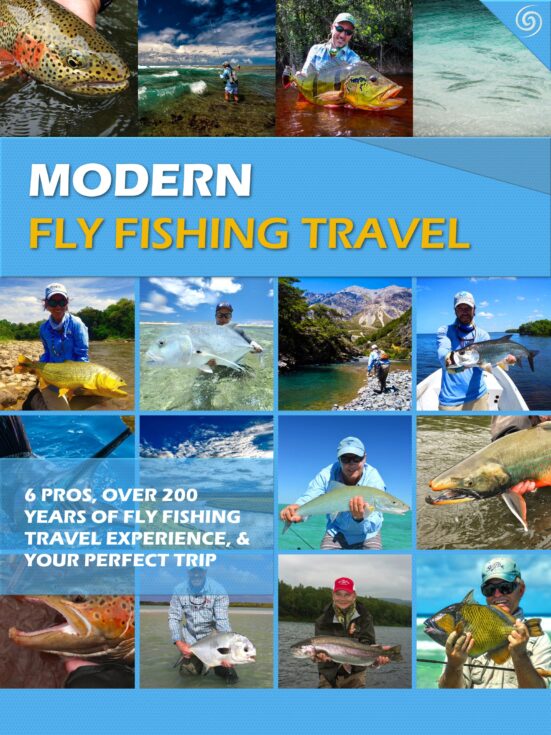
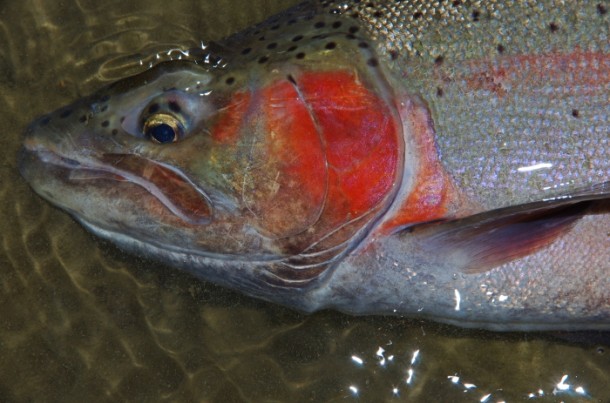
Hey Justin, I was reading this and I fish the Great Lakes also. I was wondering in the article when you broke your rod tip and you went to get your spare and came back, did the two guys in your spot have a green boat and one guy fishing on a ladder? If so, was me sorry. There was nobody around when I came up. I just remember that day so well, there was so many fish and the guy that came back from breaking his rod was pretty mad. Anyways if it was you, I was up there today and there is plenty of fish.
Hey Austin,
That’s funny. It must have been you guys. No worries, my man. I was more or less astonished with my luck and pissed that I had broken my rod tip. You guys did nothing wrong at all. Interesting that the fish are moving in with the colder water temps. I’ll be up all around that area later for sure. Thanks for reaching out, and enjoy that fishery.
Justin
Great article. I am a carp fly angler from colorado (now live in texas) and I catch them every month of the year. Such a blast and like you I enjoy helping others learn about this great fly rod species!
Hey Brian,
I appreciate it! They are such an amazing fish, and if you haven’t done the Great Lakes, I highly recommend it. That open water is so much fun.
Thanks again,
Justin
Hey Brian,
Where in Texas do you fish??